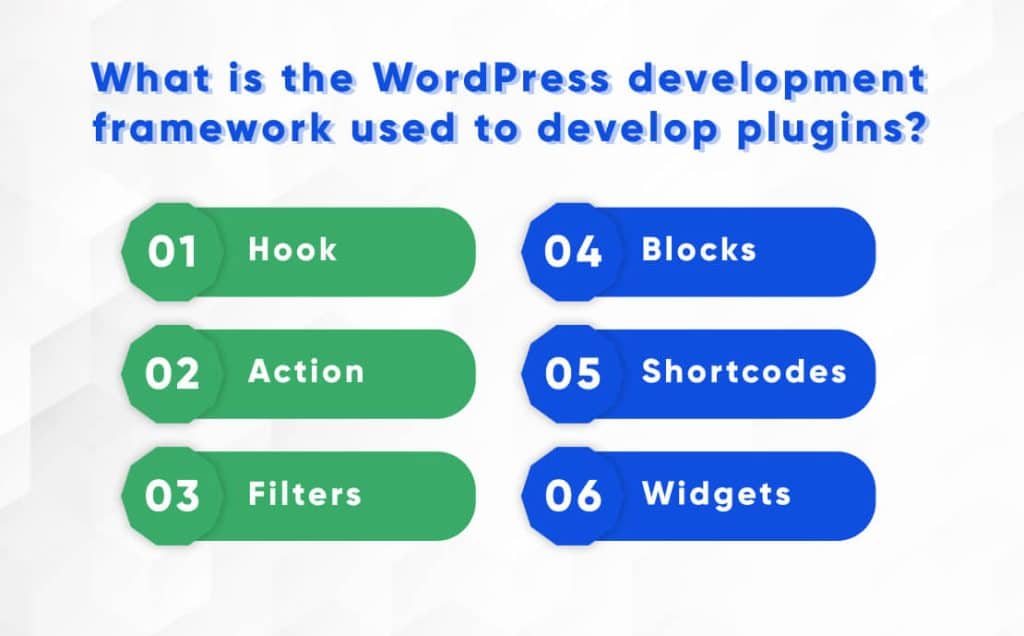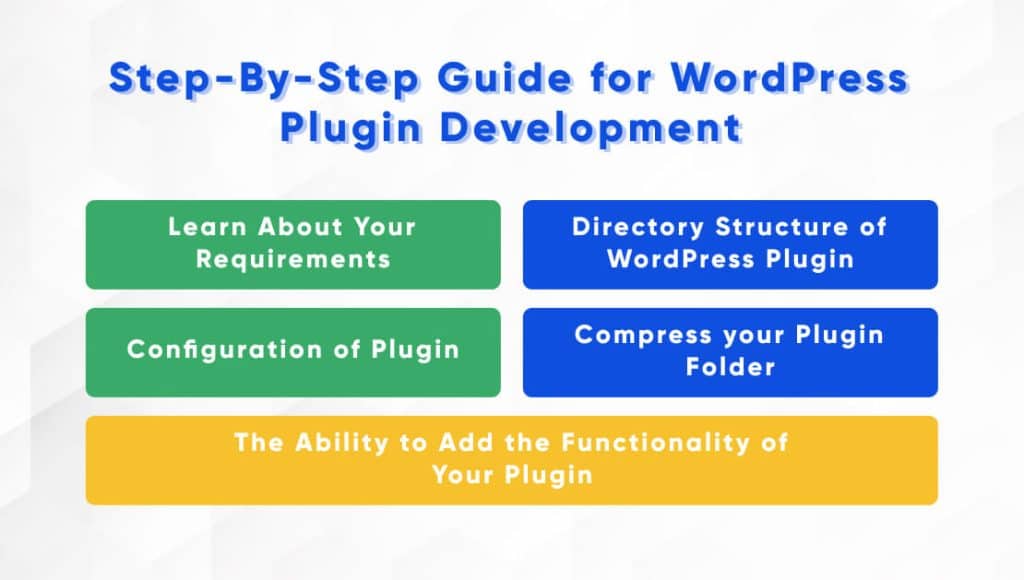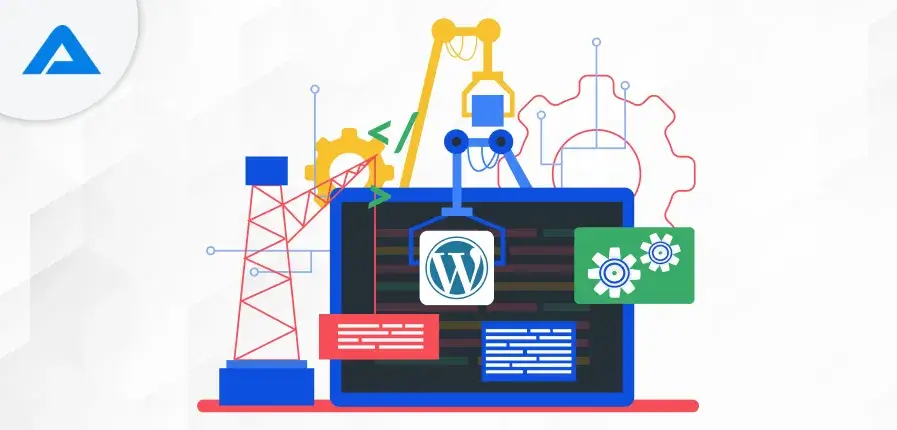WordPress is the mainstay of many websites, making it among the most used CMSs (CMSs) currently. Plugins form an integral part of the WordPress environment, allowing users to customize and increase their website’s reach.
WordPress is among the most well-known and flexible platforms in the world of web development. Its versatility is mainly due to the vast ecosystem of plugins that improve functionality and allow users to design distinct online experiences that meet their preferences. In this article, we’ll explore the significance of WordPress plugin development and the processes involved.
Making your personal WordPress plugin may seem overwhelming initially, but with the proper instructions, it could be satisfying. This step-by-step guide will take you through creating the WordPress plugin from scratch, ensuring that your Plugin isn’t just functional and optimized for search engines.
What is WordPress?
WordPress is the world’s leading Content Management System (CMS), trusted by thousands of digital content creators for its user-friendly interface and flexible architecture.
Its ease of use makes it a top choice for non-technical users, while web designers leverage its versatility to build some of the most influential websites on the internet.
What is a WordPress Plugin?
WordPress plugins enable users to enhance their websites with specific features and functions without altering the core WordPress code.
These plugins vary in complexity, ranging from simple extensions that improve aesthetics to advanced tools that manage large amounts of data and processes.
WordPress plugin development services offer custom solutions tailored to meet specific needs, such as adding social media share buttons to blogs or integrating lead generation forms on commercial websites.
These plugins are modular, compatible with any WordPress platform, and provide unlimited opportunities for customization. By opting for WordPress plugin development services, users can create a highly personalized website that aligns with their unique business goals and requirements.
What is the WordPress development framework used to develop plugins?

We understand how WordPress plugins function before designing their functionality, which is helpful. Instead of delving into how each Plugin functions step-by-step, we’ll look at the four primary WordPress elements.
Hook
Through hooks, developers can alter the process within WordPress without changing the main files. This isolation degree is achieved by attaching function fragments or code hooks to the WordPress core from various points. Contextual hooks fall into two groups: actions hooks and filters hooks.
Action
Action hooks in WordPress are actions. The most frequent actions in WordPress are writing, watching, and saving posts. Actions and code can be changed, but action hooks can be triggered through adding-action() action.
Filters
Filter hooks modify a procedure or even the information generated using functions. They assist in manipulating data without altering the data source. The apply-filters () function is required to get the name of the filter, and the data it is filtering triggers these hooks.
Blocks
Blocks have become a part of WordPress plugins as of WordPress 5.0. The Plugin’s users can interact with the content, create material, or create content with blocks. For blocks to be used effectively, developers should have an understanding of the concepts of JavaScript, Node.js, React, and Redux. This could be challenging for those who have been focusing on the creation of WordPress plugins that use PHP.
Shortcodes
Shortcodes can be described as a mix of codes and shortcuts. They’re used to provide interactive HTML components to articles or webpages. Each shortcode can perform an active task on the user’s end and is typically described with square brackets.
Widgets
Developers can also use widgets that display content from plugins in the front. The widget creation for plugins can be extended using the PHP WP widget class extension.

Find out why custom WordPress web development is the ultimate preference for your business needs!

Pooja Upadhyay
Director Of People Operations & Client Relations
How to Add WordPress Plugins to Your Website?
Depending on where you bought it, there are many methods to install the WordPress plugin.
Plugincond is the automated option that allows users to install plugins directly within the WordPress administrator section. The plugin directory is integrated into each WordPress-leading software to give users immediate access.
In your administrator screen From your admin screen, click the Plugins and then Create New. The gallery will show plugins you can add to your WordPress website.
When you’ve found the version you’d like to install, click the “Install Now“button. In this case, we’ll demonstrate how to install Akismet, the anti-spam WordPress plugin with more than five million active installations.
Once the installation is completed, you can select “Activate“ to activate the newly installed WordPress plugin.
Additionally, you can install WordPress plugins you’ve downloaded from various third-party sites by hand. WordPress lets you upload, install, and activate the Plugin iPluginformat.
How to Update a WordPress Plugin?
Keeping your WordPress site up to date is crucial for both security and performance. This means not only updating your WordPress installation but also ensuring that your plugins and themes are always current.
Updates to plugins are essential not only for adding new features but also for maintaining your site’s security. Older versions of plugins may have vulnerabilities that are addressed and corrected in newer versions.
WordPress provides various options for updating plugins, allowing you to choose which plugins to update and when.
To update plugins, go to your WordPress admin area and navigate to the “Plugins” section. A table will display all the plugins you have installed on your site.
For a manual update of a specific plugin, simply click the “Update Now” button in the yellow notification window.
If you want to update several plugins at once, select the plugins you want to update by ticking the checkboxes next to them. Then, choose “Update” from the bulk actions drop-down menu and click “Apply.”
You can enable automatic updates for each plugin by selecting “Enable automatic updates” under the “Automatic Updates” column. This allows WordPress to automatically keep plugins updated, saving you time and effort.
Ensuring regular plugin updates is a key part of maintaining a secure and efficient site. However, in some cases, you might prefer to do manual updates, especially for feature-related updates, as new features could potentially introduce bugs or slow down your site.
If you want to be cautious, enable automatic updates only for plugins from trusted developers. For other plugins, check for updates regularly to ensure your site remains secure. For professional assistance with plugin management, consider opting for WordPress development services to ensure optimal functionality and security for your site.
How Do WordPress Plugins Affect Website Performance?
The use of WordPress plugins can put an added strain on your hosting resources at a certain level. Many people believe that adding excessive plugins can slow down their websites.
In reality, the WordPress plugin’s efficiency and quality can have more impact on the performance of the site than the amount of plugins you have installed.
Good-quality plugins are efficiently designed because they consume only a few resources. Conversely, better-quality plugins are more likely to consume unnecessary resources and can adversely affect website performance.
It is possible to install hundreds of premium plugins with absolutely no problems. Conversely, it is possible to install only one or two poor-quality plugins and witness your load speed drastically decrease. For optimal website performance, you should use plugins with a track record of efficient performance.
An excellent rule of thumb is to test your site’s speed each time you update a WordPress plugin. Use a tool such as PageSpeed to find out whether your website’s speed changes before or after installing plugins.
Consider the hosting provider you’re using, for instance. It’s possible that the provider you use doesn’t follow the best optimization techniques, and you’re also using an entry-level web hosting service with only a few specifications.
A different issue is an overloaded theme. Themes with excessive features or poor code quality can make websites slow. When choosing a theme, it’s advisable to select one that is light in weight.
Step-By-Step Guide for WordPress Plugin Development

Remember that you’ll have to create a test area or staging site before you add a new plugin or modify any of the files. This lets you test without breaking your existing site.
Learn About Your Requirements
The initial step in creating a custom WordPress plugin is to select the appropriate name. Your name should be pertinent to Plugintinctive’s purpose.
It’s always a good idea to check the WordPress Plugin Directory and do some Google searches to confirm there’s nothing else using the same name you’re considering using. Remember that the name you choose for the Plugin will be the name of the folder containing it and the name of a PHP file.
Directory Structure of WordPress Plugin
The first and most important thing is that your Plugin is a place to live. After you’ve picked the Plugin, you’ll be required to create a folder to house the file.
For the first step, go to the WordPress installation’s wpcontent/plugins folder. Make a folder named “your-plugin-name,” with hyphens between each word (i.e., “your-plugin-name”)
Configuration of Plugin
The file header must be added to the header file after you’ve established your plugin directory and uploaded files to it. It’s a PHP comment block that contains details specific to the Plugin. The Pluginle header for a file is available within the WordPress codex.
The Ability to Add the Functionality of Your Plugin
Plugin nation has been laid out for your Plugin. It isn’t working now. You must use the components discussed in this article to create your Plugin.
There are too many ways to develop and implement plugins, all in one post. If you require assistance writing the Plugin, consult The WordPress Codex.
Compress your Plugin Folder
As mentioned, adding a PHP file to the WordPress plugins directory will automatically include the Plugin onPluginWordPress website. However, utilizing a text or code editor to create your PHP files and code for your plugin is possible. TPluginuld be among the most effective WordPress plugin creation tools.
It is necessary to convert your plugin to.zip format before transferring it onto your WordPress website. So, after you’re done adding the code you’d like to incorporate, you’ll need to compact the Plugin’s Plugins. Ree Plugins Vs. Custom Plugins
Most of the time, it is the case that the feature you require is already included in a free plugin.
WordPress plugins can be as essential or complicated as you’d like them to be. Sometimes, you’ll discover an unpaid plugin that meets your business needs. If so, take it up; that’s an easy choice.
However, in most cases, a plugin doesn’t include some items you’ll need and also has certain features you do not really require. The free version may have restrictions you’d prefer not to. You’ll be required to install additional extensions to accommodate all of your business’s needs.
This is where the major drawback with WordPress plugins is revealed. Each Plugin with plugin doesn’t require adding some data to be loaded upon opening your site. Although the performance impact may appear initially, it increases with each Plugin plugins.
People are susceptible to plugging times; even a 0.5-second delay may cause users to leave your site. Most available plugins are created by college students who need more robust programming pattern knowledge. This is why they need to develop better-designed and more secure plugins.
Compatibility is a different issue. For instance, suppose you’ve downloaded an online payment gateway. It needs to function correctly in conjunction with the Woocommerce plugin, even if one is upgraded. The same goes for WordPress or PHP changes. Maintaining plugins could take a lot of cash and time over the long term.
How A Custom Plugin Is Maintained?
When you’ve made your Plugin eligible for public use, it’s up to the Plugin Maintenance. Ensure the custom WordPress plugin development services is fully compatible with Plugin maleficent versions of PHP and WordPress.
In the event of updates to either the language or platform, Maintenance is essentially concerned with having a test system updated with the latest versions. It is about determining whether any features were deprecated or may conflict with the software you’re running and looking for a solution.
The Plugin is checked every time WordPress Plugin PHP releases a new version. This can include minor improvements that could benefit the speed, memory consumption, preferred plugins, etc.
Maintaining an existing plugin demands the same knowledge and skills as creating one. Therefore, it is recommended that you sign an agreement to support your developer for the Plugin. Furthermore, developing an application plugin for a significant business such as Addweb Solutions ensures that problems will be addressed immediately since we care about our name.
Conclusion
One of the benefits of WordPress is the flexibility it offers and the possibility of installing various plugins, both paid and free. This is why everyone who is a WordPress novice should know the plugins they use, what they are, how they work, and how they can be managed.
In this post, we’ve covered the essentials of WordPress plugins. After you’ve learned about the definition of a WordPress plugin and what it does, you need to identify the most effective plugins to meet your WordPress website’s objectives.
WordPress Plugin development is an evolving and essential part of the WordPress ecosystem. Through plugins, site owners can access an entirely new level of performance and flexibility. At the same time, developers use their knowledge to develop innovative solutions that determine the direction of hiring WordPress developers.
WordPress plugins let businesses and brands create distinct features and distinctive WordPress websites. It is essential to choose between WordPress.com and WordPress.org from the more than sixty thousand options. Since the WordPress platform is open source, anyone who knows PHP code, PHP files, and an appropriate set of software and platforms could develop a WordPress plugin.
Developing themes and plugins can be categorized as specific to a website’s function or style; WordPress backend development spans several areas. This includes the development of customized functions and features that are utilized to maintain and manage the website.
Frequently Asked Questions About Custom WordPress Plugin Development
WordPress plugins are primarily written in PHP. However, you may also use HTML, CSS, and JavaScript to create user interfaces and enhance functionality.
The cost of developing a WordPress plugin varies widely based on complexity and developer rates. A simple plugin might cost a few hundred dollars, while a complex one could range from $1,000 to $10,000 or more.
The cost to hire a WordPress developer can vary. Hourly rates typically range from $20 to $150, depending on the developer’s experience and location. For project-based work, prices can vary widely based on the scope and complexity.
The difficulty of creating a WordPress plugin depends on your programming skills and the complexity of the plugin. Simple plugins can be made with basic PHP knowledge, while more complex plugins may require advanced coding skills and a good understanding of WordPress architecture.

Need experienced WordPress plugin developers? Meet a team of WordPress experts at AddWeb Solution.

Pooja Upadhyay
Director Of People Operations & Client Relations
